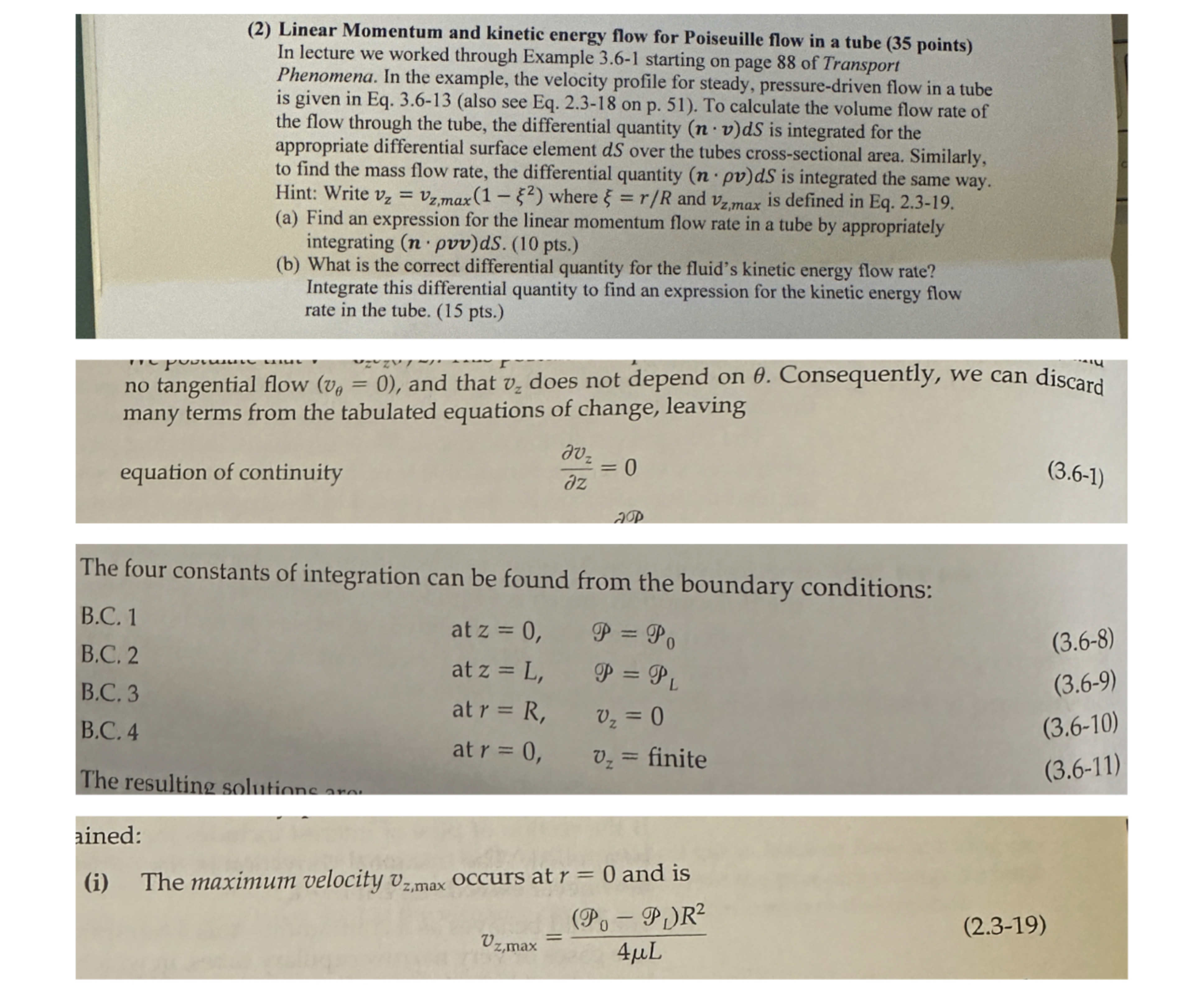(Solved): (2) Linear Momentum and kinetic energy flow for Poiseuille flow in a tube ( 35 points) In lecture we ...
(2) Linear Momentum and kinetic energy flow for Poiseuille flow in a tube ( 35 points) In lecture we worked through Example 3.6-1 starting on page 88 of Transport Phenomena. In the example, the velocity profile for steady, pressure-driven flow in a tube is given in Eq. 3.6-13 (also see Eq. 2.3-18 on p. 51). To calculate the volume flow rate of the flow through the tube, the differential quantity \( (\boldsymbol{n} \cdot \boldsymbol{v}) d S \) is integrated for the appropriate differential surface element \( d S \) over the tubes cross-sectional area. Similarly, to find the mass flow rate, the differential quantity \( (\boldsymbol{n} \cdot \rho \boldsymbol{v}) d S \) is integrated the same way. Hint: Write \( v_{z}=v_{z, \max }\left(1-\xi^{2}\right) \) where \( \xi=r / R \) and \( v_{z, \max } \) is defined in Eq. 2.3-19. (a) Find an expression for the linear momentum flow rate in a tube by appropriately integrating ( \( \boldsymbol{n} \cdot \boldsymbol{\rho v v} \) )dS. (10 pts.) (b) What is the correct differential quantity for the fluid's kinetic energy flow rate? Integrate this differential quantity to find an expression for the kinetic energy flow rate in the tube. ( 15 pts .)

